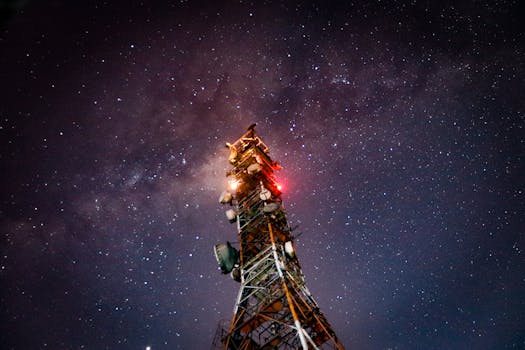
Starlink: Revolutionizing Global Internet Connectivity with Satellite Technology
Starlink is a cutting-edge satellite constellation developed by SpaceX, founded by Elon Musk, with the primary objective of providing high-speed, low-latency internet connectivity to the entire world. This innovative technology aims to bridge the digital divide, making it possible for individuals and communities in remote and underserved areas to access the internet, thereby transforming the way we communicate, work, and live.
The concept of Starlink was first announced in 2015, and since then, SpaceX has been working tirelessly to launch a network of satellites into low Earth orbit. Each satellite is equipped with advanced technology, including Hall effect thrusters, star trackers, and high-gain antennas, which enable them to provide fast and reliable internet connectivity. The satellites are designed to operate at an altitude of approximately 550 kilometers, which is significantly lower than traditional geostationary satellites, resulting in reduced latency and improved signal strength.
One of the key features of Starlink is its ability to provide global coverage, including areas where traditional fiber-optic cables and cellular networks are lacking. This is particularly significant for rural and remote communities, where access to the internet is limited or non-existent. With Starlink, these communities can now access a wide range of online services, including education, healthcare, and financial resources, which can have a profound impact on their quality of life. Additionally, Starlink can also provide backup connectivity during natural disasters or network outages, ensuring that critical communication services remain available.
Starlink has also gained significant attention from the aviation and maritime industries, where reliable and high-speed internet connectivity is essential for safe and efficient operations. The satellite constellation can provide in-flight internet connectivity, enabling passengers to stay connected and productive during flights. Similarly, Starlink can also provide internet connectivity to ships and vessels at sea, facilitating real-time communication and navigation. Furthermore, the technology has the potential to support a wide range of applications, including IoT (Internet of Things), smart cities, and emergency response services.
Despite the many benefits of Starlink, there are also challenges and concerns that need to be addressed. One of the primary concerns is the potential for space debris, as the launch of thousands of satellites into low Earth orbit can increase the risk of collisions and contribute to the growing problem of space junk. Additionally, there are also concerns about the impact of Starlink on the night sky, as the satellites can reflect sunlight and interfere with astronomical observations. To mitigate these risks, SpaceX is working closely with regulatory agencies, such as the Federal Communications Commission (FCC), to ensure that the deployment of Starlink is done in a responsible and sustainable manner.



